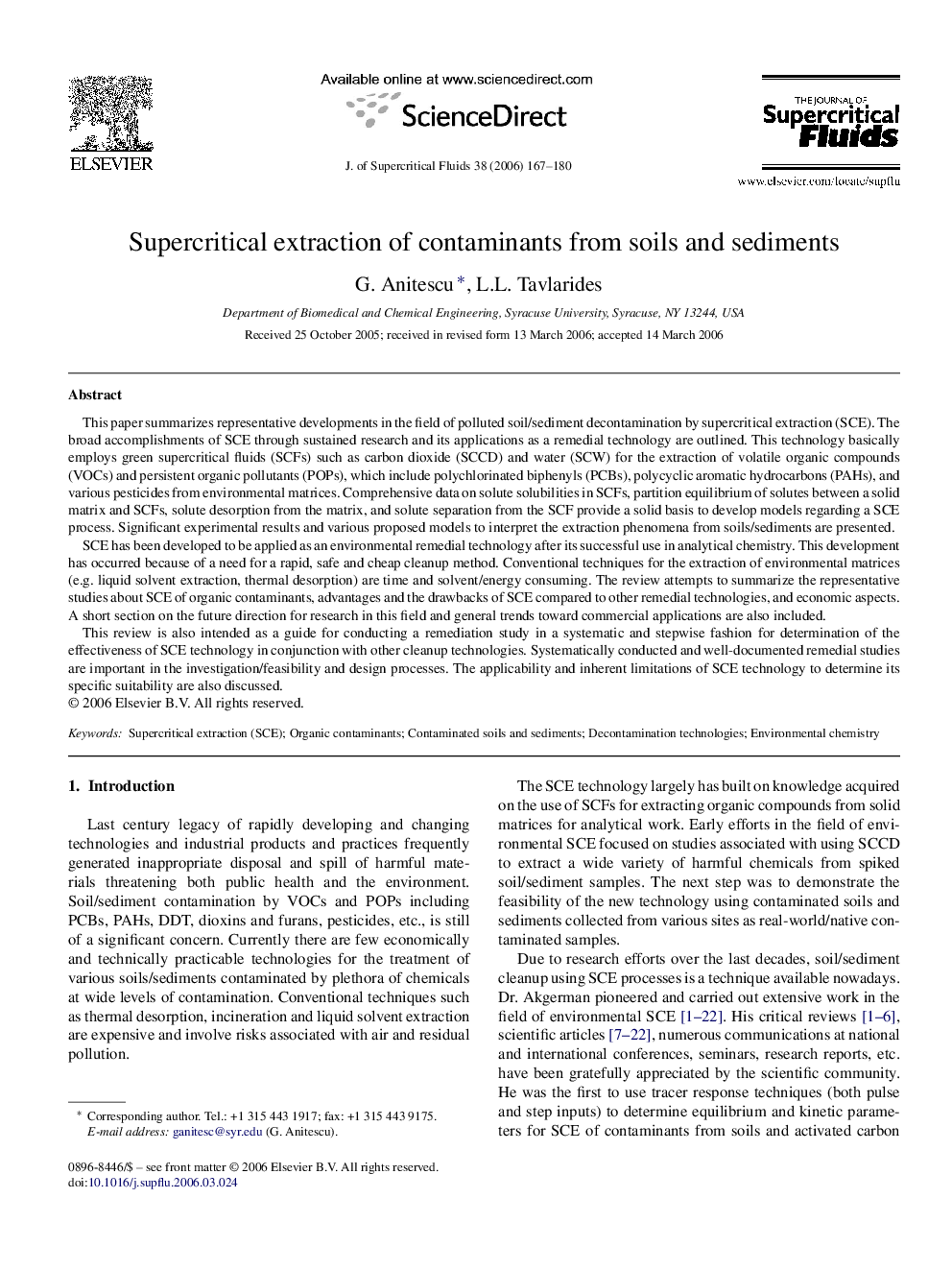| Article ID | Journal | Published Year | Pages | File Type |
|---|---|---|---|---|
| 232380 | The Journal of Supercritical Fluids | 2006 | 14 Pages |
This paper summarizes representative developments in the field of polluted soil/sediment decontamination by supercritical extraction (SCE). The broad accomplishments of SCE through sustained research and its applications as a remedial technology are outlined. This technology basically employs green supercritical fluids (SCFs) such as carbon dioxide (SCCD) and water (SCW) for the extraction of volatile organic compounds (VOCs) and persistent organic pollutants (POPs), which include polychlorinated biphenyls (PCBs), polycyclic aromatic hydrocarbons (PAHs), and various pesticides from environmental matrices. Comprehensive data on solute solubilities in SCFs, partition equilibrium of solutes between a solid matrix and SCFs, solute desorption from the matrix, and solute separation from the SCF provide a solid basis to develop models regarding a SCE process. Significant experimental results and various proposed models to interpret the extraction phenomena from soils/sediments are presented.SCE has been developed to be applied as an environmental remedial technology after its successful use in analytical chemistry. This development has occurred because of a need for a rapid, safe and cheap cleanup method. Conventional techniques for the extraction of environmental matrices (e.g. liquid solvent extraction, thermal desorption) are time and solvent/energy consuming. The review attempts to summarize the representative studies about SCE of organic contaminants, advantages and the drawbacks of SCE compared to other remedial technologies, and economic aspects. A short section on the future direction for research in this field and general trends toward commercial applications are also included.This review is also intended as a guide for conducting a remediation study in a systematic and stepwise fashion for determination of the effectiveness of SCE technology in conjunction with other cleanup technologies. Systematically conducted and well-documented remedial studies are important in the investigation/feasibility and design processes. The applicability and inherent limitations of SCE technology to determine its specific suitability are also discussed.
